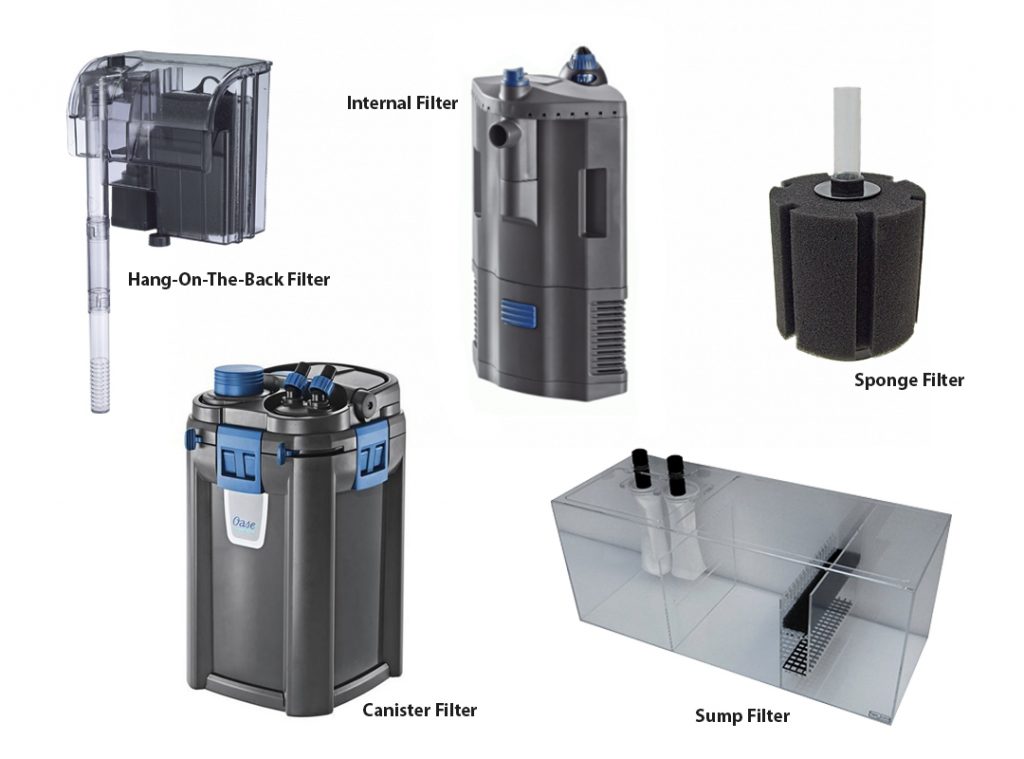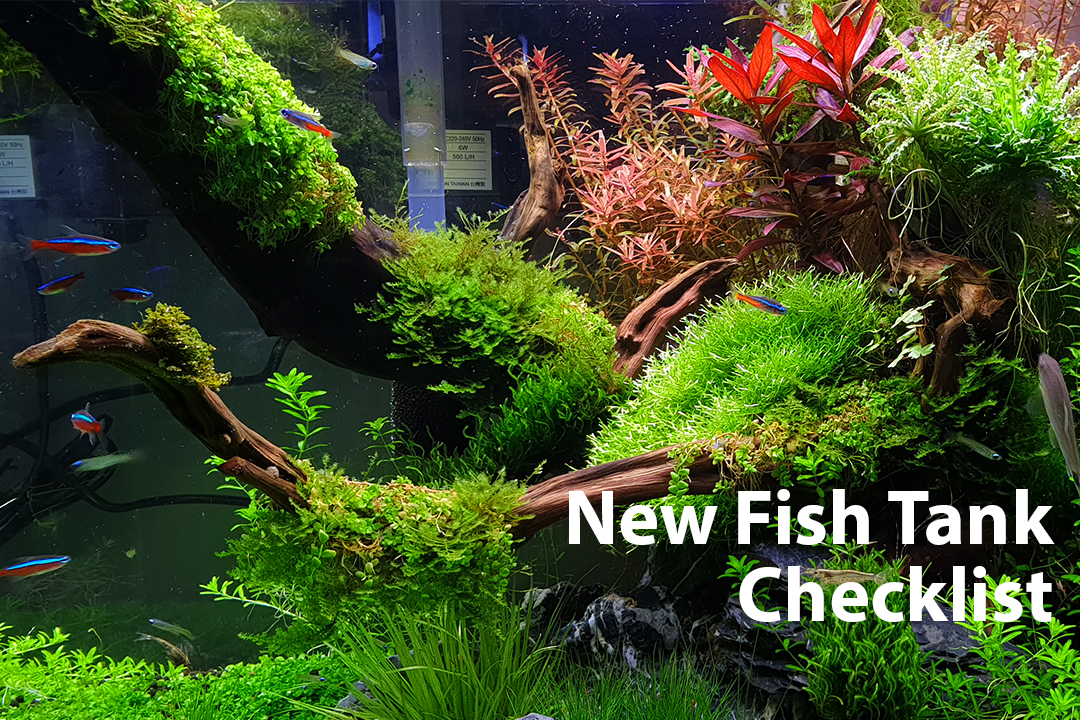Fishes are one of the most popular pets to have in many different homes throughout the world. A beautifully set up aquarium with fish is a great centrepiece and can be eye-catching for guests. Aquariums also provide benefits mentally and at times physically. With all that said, setting up an aquarium can be daunting to many due to the many types of equipment needed for setting up one. Here is a beginner’s guide to all you need for starting your first aquarium.
Plan Ahead!
Planning is very important in the fish keeping hobby. Planning prevents any compatibility issues that can arise from equipment and most importantly the flora and fauna that is going into the tank. So if you’re taking your first dive into fishkeeping, you should first decide on the species of fish you want and how many of them you’d like in your tank—taking into account the size they will mature into, their compatibility, water conditions they would need to thrive, and items (hardscapes such as woods/rocks, substrates, plants, decorations, etc.) they prefer in their habitat. This will help you in selecting the proper gear for your set up and provide a healthy environment for your new pet fish in the long run.
When Can I Start Adding Fish
As eager as we may be to stock our new tank with some finned friends, it is crucial that you allow time for your new tank to stabilize through a process called “cycling” which takes 4-8 weeks to complete. This process will prevent the unnecessary death of your new pet as it allows for the establishment of a healthy ecosystem before introducing inhabitants. If you are adamant about adding fish on the first day you get your tank, you can purchase live bacteria starter products like JBL Denitrol and other similar products to jump-start the cycling process and reduce waiting time. Note that the risk of fish prematurely dying is still there even with the addition of products like this. Adding fish into an aquarium should be gradual, it is not recommended to add too many fish at once as the amount of waste produced can overload the aquarium causing ammonia spikes and killing the inhabitants.

Try some of the hardier species of fish like the White Cloud Mountain or Danio if you are uncertain about much more fragile species.
I’ve Decided—What’s Next?
Once you’ve done your research and planning, it’s time to get acquainted with the necessities to prep for your new aquatic friends!
The Aquarium
The aquarium will be used to house your fish. When considering a suitable aquarium, consider the size of the aquarium you are getting. Different sized aquariums require different equipment such as filters and lights. Also, consider the type of material the aquarium is made of. Glass aquariums are the most common but there are other options too such as plastic and acrylic. If you want you can also consider what type of glass is used such as low-iron glass or crystal glass which makes viewing clearer than normal glass.
The Filter
The filter is the most important part of the aquarium setup! The filter is responsible for keeping the aquarium water clear from debris and toxic compounds. The filter also houses the majority of the beneficial bacteria that the aquarium needs to to ‘cycle’ the tank to convert toxic ammonia to less harmful nitrates. There are different types of filters in the market such as hang-on-the-back filters (HOB), canister filters, internal filters, sponge filters, trickle filters, and sump filters. Find out which one is best suited for your tank by doing a little bit of research online.

Each different type of filters has its advantages and disadvantages.
Lighting
Lighting is important to simulate daylight for the fish and also to illuminate the tank for better viewing. Lighting also supports photosynthesis for plants, especially in a planted tank. There are many different types of lighting too and it all depends on what type of aquarium you are trying to set up. The lights also come in various different colours to help enhance the colours of fish/plants.
The Substrate
The substrate is what you will have at the bottom of the tank. Substrates for aquariums come in many different forms where the most common are aqua soil, gravel, and sand. Each type of substrate has its own uses: Aqua soil is mainly used for a planted tank as the soil provides nutrients needed by the plants through their roots, whereas gravel and sand do not have any nutrients in them. Gravel is mainly used for aesthetic purposes and comes in many different colours. Sand is used for a natural aesthetic but is also suited for bottom-dwelling fish such as Corydoras as it is not too rough to their body.

Soil, gravel, and sand can be found in your local fish store.
The Decorations
The decorations can be anything you add into your tank for aesthetic purposes. Decorations add interest to the tank and also provide plenty of hiding spots for your fish to feel safe. The decoration depends on how you want the tank to look like. For a more natural look, hardscapes such as rocks and wood help to mimic natural habitats in the wild including plants. Artificial decorations such as ornaments and artificial plants can add a little bit of colour to the aquarium if needed.
Water Conditioners
Water conditioners are always a must-have item for anyone with an aquarium. Water conditioners help to eliminate chlorine, chloramines, and heavy metals from tap water, keeping the aquarium water safe for your fish and the ecosystem in the aquarium. Chlorines are harmful to fish and can cause chlorine burns to their gills. Chlorine is also used to eliminate microbes in tap water, which will kill the beneficial bacteria in the aquarium if not treated.
Heaters/Fans/Chillers
Heaters, fans, and chillers help to optimize and maintain the water temperature in the aquarium. Not all fish can tolerate the same temperatures so make sure the ones you choose are compatible with each other.
Water Testing Kit
A water testing kit is a handy tool to have especially when a new tank is set up. This kit will be used to monitoring the water for imbalances or if your tank is stable. It can also help to tell if there are any specific issues happening in the water which makes solving the problems easier.

Water test kits can be as simple as using strips or a set to test for different elements present in the water.
Water Syphon/Gravel Vacuum
A water syphon/gravel vacuum makes water changes easier and helps to remove any debris, waste, and dirt collected in the substrate.
Algae Scrubber
An algae scrubber makes cleaning the walls easier without constantly dipping our hands into the water. Aquarium-safe sponges can also be used if you don’t mind a little dirty work.
Fish Net
A net comes in handy to transfer fish or remove floating debris.
Set Up Basics
After buying everything you need, it is time to set up the aquarium!
- Find an ideal spot for the tank–preferably in a low traffic area (to minimise fish stress) with indirect sunlight (to inhibit excessive algae growth) and a power source nearby.
- Rinse the substrate and decorations (if needed) until the water runs clear.
- Lay down the substrate and arrange the decorations. After that, carefully fill the tank about one-third with water to make sure everything stays in place. If you have plants, wet the substrate and plant the plants.
- Add some de-chlorinator to water.
- Install the filter, lighting, and other equipment. Be sure to fill up the tank first before turning on the equipment.
- Finish up with more de-chlorinated water, leaving some air space between the surface of the water and the top of the tank.
- You can start to add fish once the tank is stabilized and cycled in a few weeks. Follow these simple steps when adding fish into the tank.
Getting your foot into the hobby shouldn’t be a daunting experience. With some help from the Internet and from professionals at your local aquatic store, you’ll be on your way to confidently create your first tank in no time.

